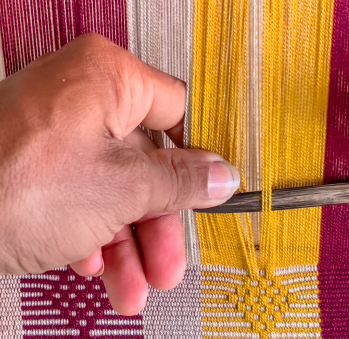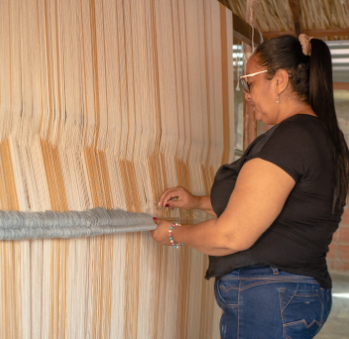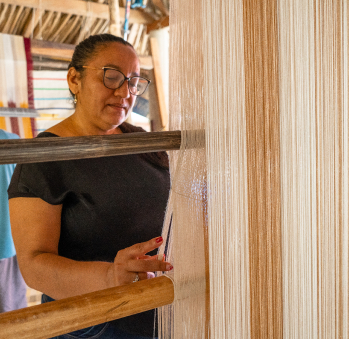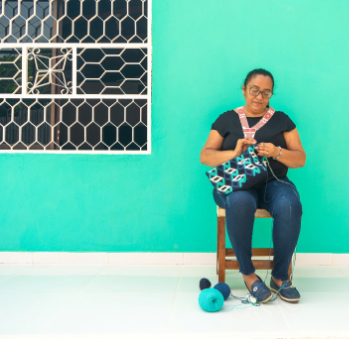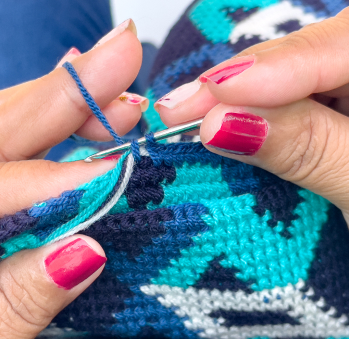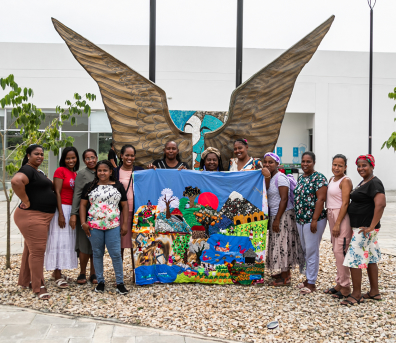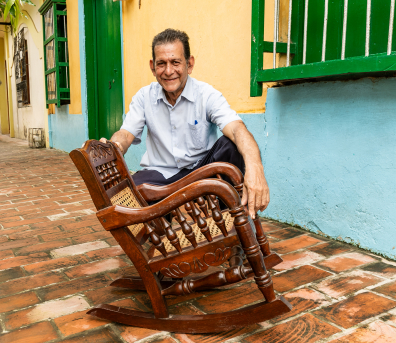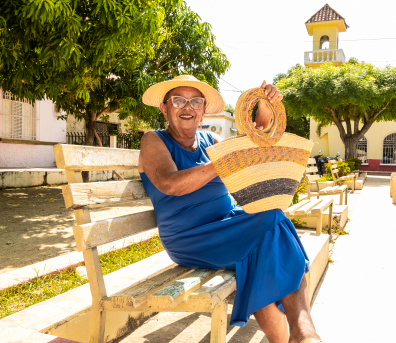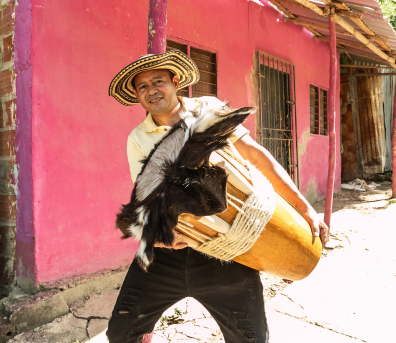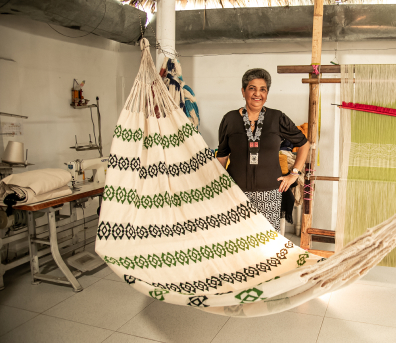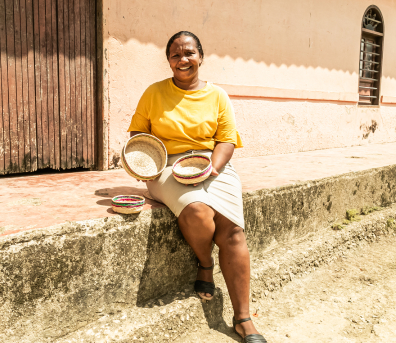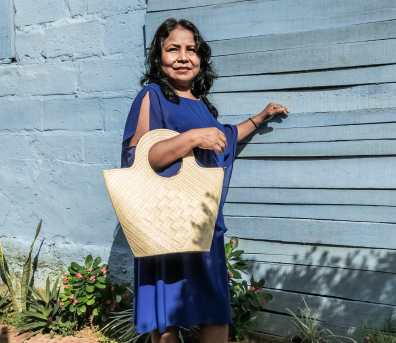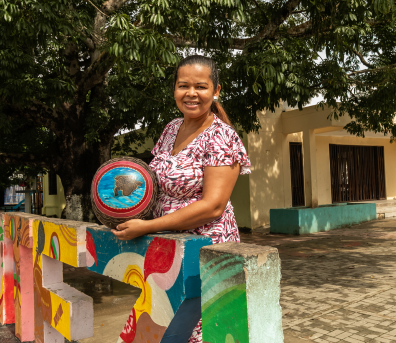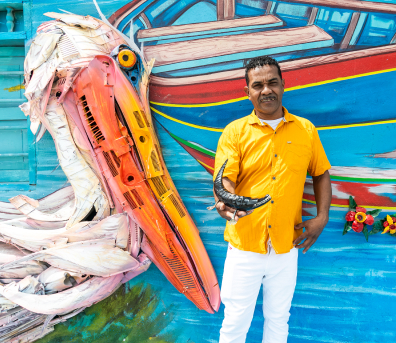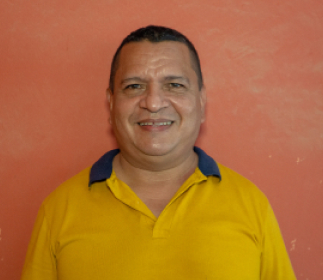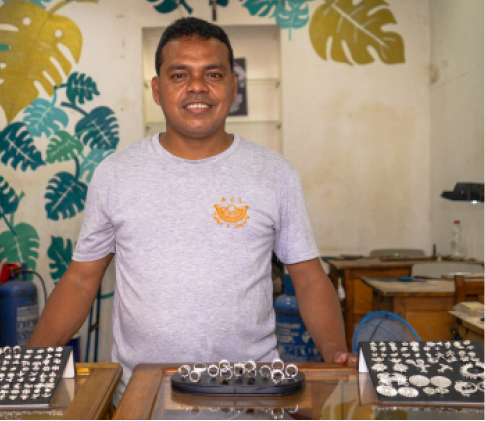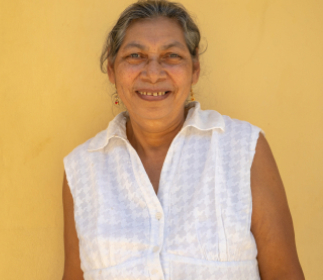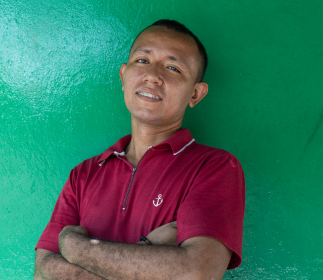Damaris Elena Buelvas Escalante
“I am not leaving San Jacinto: I cannot leave my loom behind.” These are the words of Damaris Buelvas, and they show the clarity of her resolve. She was born in San Jacinto and is grateful for having had the opportunity to master the craft of weaving. This trade has allowed her to feed her daughter, Claudia Cecilia, as well as to send her to school. She has also been able to support her family and has attended fairs and events all over the country. Orphaned by her mother when she was only three years old, she is the youngest of four sisters. She remembers starting to weave when she was nine, just as everyone in her household had done before her.
She got scared when, at the age of twelve, she had to craft her very first large hammock. She thought she was never going to be able to do it. However, she had to overcome her fears as fast as possible because she was aware that working on the loom was a part of growing up. So, when she turned fifteen and fell in love, she knew she had to assemble her loom and help keep food on the table at her new home. And she instantly knew how to do it: the knowledge was in her blood.
For 35 years, she wove alongside her then-partner, César Castro. They both suffered through the intense violence that took place in the late 1990s in the department of Bolívar and had to move to Cartagena for a while. They lived off of their savings at that time because they could not get a stable job. When they returned to San Jacinto, Damaris, aware of their situation, told her husband that he would have to learn to weave, since the fields were mined, and it was impossible to be a farmer anymore. He did so as many of the region’s men. They all began in secret, and then gradually started feeling more and more pride in their weaving.
Today, having divorced her husband, Damaris continues crafting her hammocks and mochila bags. She is proud of her work because, just as it has for many of the town’s women, it has allowed her to be self-sufficient. All of them know their hands have given them their freedom. She honors Zenú tradition and ancestry, which has given rise to the region’s most emblematic weavings. She admires the universe of meaning and color that mixing different materials has added to the traditional hammocks, which have been classified as denominations of origin.
They have also expanded their product portfolio, always combining custom and innovation. They now make table runners, backpacks, placemats, rugs, and handbags. Many of these novel wares are dyed with achiote or cotton seeds and fixed using vinegar or iron. The results are astonishing colors throughout their products. She is glad to know that her daughter understands the business well. “She is brighter than I am,” she says in laughter. She speaks in this fashion because Claudia’s grandmother, Sista, taught her math, and she learned very well.
She is also happy to know that the newer generations of female weavers have been thoroughly trained over the years and will preserve the legacy of San Jacinto. An instance of the latter is the association of craftswomen Damaris presides over, made up of 30 craftspeople who are weaving their future.
Craft
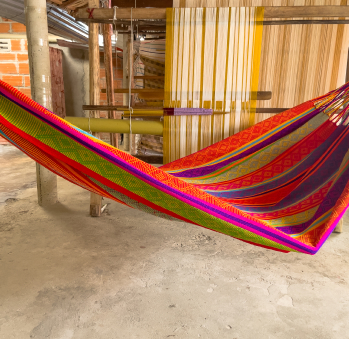

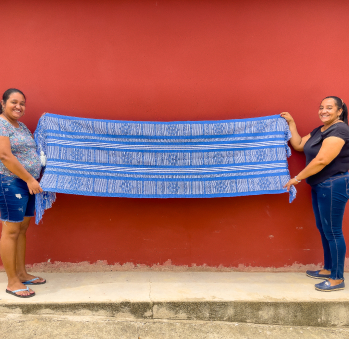



Artisans along the way
Artisans along the way
No puede copiar contenido de esta página









































